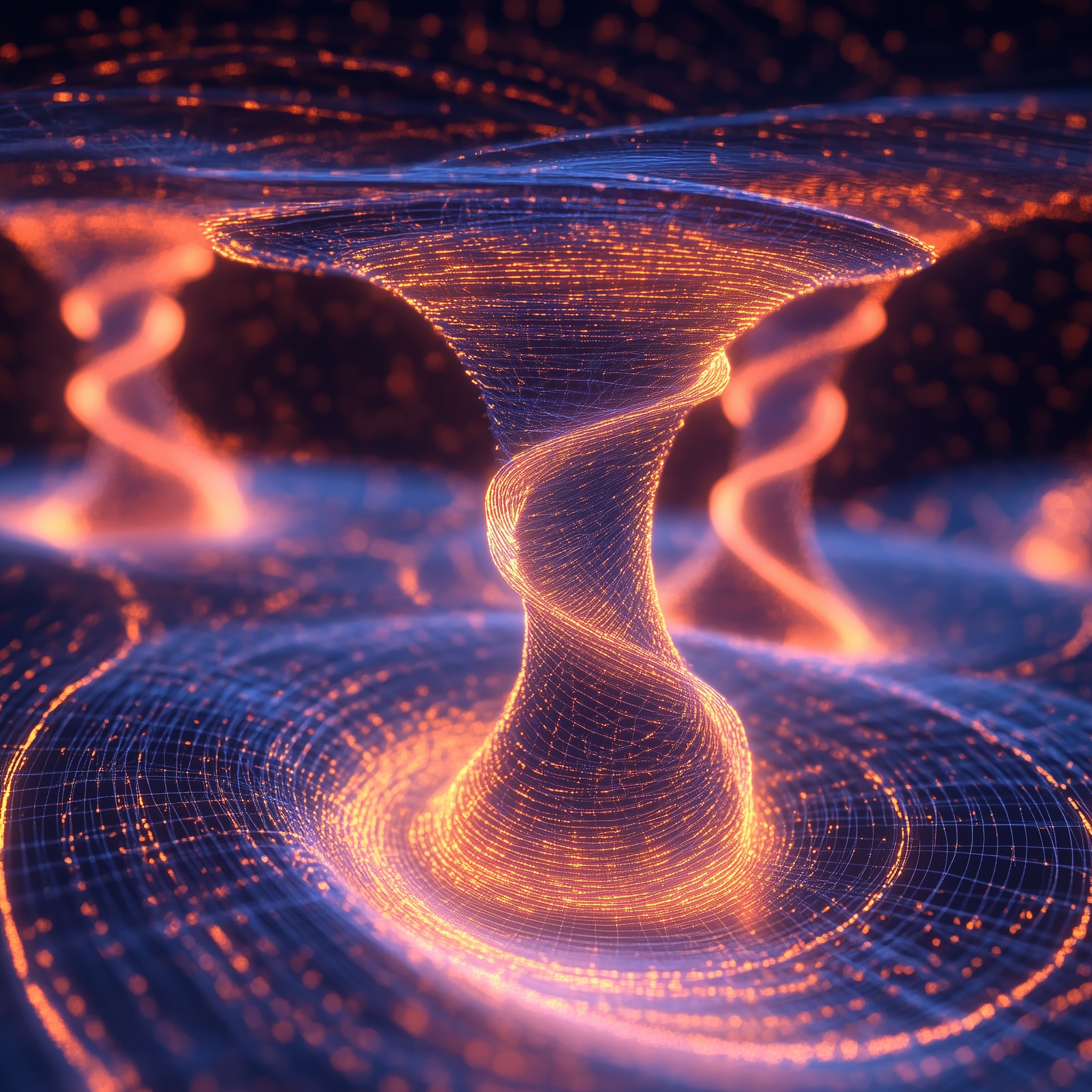Imagine a substance as unyielding as diamond yet flowing effortlessly like a perfect liquid. This isn’t science fiction it’s the enigmatic world of supersolids, a quantum state of matter that defies classical physics. Recently, scientists achieved the unimaginable: transforming laser light into a supersolid. This breakthrough not only redefines our understanding of light and matter but also opens portals to futuristic technologies. Let’s dive into this quantum enigma, exploring its history, peculiar properties, and the thrilling promise it holds.
What Are Supersolids? The Best of Both Worlds
Supersolids are a paradoxical phase where atoms arrange into a rigid crystal lattice while simultaneously flowing without viscosity, a hallmark of superfluids. Picture ice that can seep through glass like water—this duality challenges everything we know about phases of matter.
Solid Traits: A fixed, repeating structure.
Superfluid Traits: Zero friction flow, climbing walls, or escaping containers.
This duality arises from quantum mechanics, where atoms delocalize, existing in multiple positions simultaneously. This "quantum smearing" allows the material to maintain order while enabling collective motion.
The Rocky Road to Discovery: From Helium to Quantum Gases
The quest for supersolids began in the 1960s with theorist Eugene Gross, who speculated that solid helium-4 might exhibit superfluid traits under extreme pressure. By 2004, a Penn State team claimed evidence of supersolid helium, but the results crumbled under scrutiny—the flow was due to defects, not quantum effects.
The tide turned with ultracold quantum gases. Enter Bose-Einstein condensates (BECs), where atoms chilled to near absolute zero coalesce into a single quantum state. Here, scientists could engineer supersolidity by manipulating atomic interactions.
2017: The Year of Supersolids
ETH Zurich: Placed a BEC inside two optical cavities (mirrors reflecting light). The atoms self-organized into a crystal pattern via photon exchanges, yet retained superfluid flow.
MIT: Used lasers to impart spin-orbit coupling, creating density waves (crystal order) in a BEC while preserving superfluidity.
These experiments confirmed supersolidity in a controlled setting, sidestepping helium’s pitfalls.
2019: Dipolar Breakthroughs
Teams in Stuttgart, Florence, and Innsbruck used dysprosium and erbium atoms (strongly magnetic) to form dipolar BECs. When cooled, these atoms arranged into droplet crystals connected by superfluid threads, offering unambiguous proof of supersolidity.
Light Joins the Party: Photonic Supersolids
In 2023, a team led by researchers at the University of Stuttgart and Max Planck Institute achieved the unthinkable: crafting a supersolid from light. But how? Photons, massless and non-interacting, require clever tricks to mimic matter.
Using an optical cavity filled with rubidium atoms, they trapped photons. Through laser stimulation, photons interacted via the atoms, forming a quantum fluid with crystalline structure and superfluid flow a photonic supersolid. This system acts as a “synthetic crystal,” offering a pristine platform to study quantum phenomena without material imperfections.
Why Supersolids Matter: Applications That Defy Imagination
Quantum Computing & Simulation:
Supersolids’ ordered yet flexible structure could model complex quantum systems, like high-temperature superconductors. Their coherence might enable stable qubits, resisting decoherence—a quantum computing Achilles’ heel.
Precision Sensors:
Supersolids are exquisitely sensitive to disturbances. Imagine gravitational wave detectors or gyroscopes with unprecedented accuracy, revolutionizing navigation and astrophysics.
Fundamental Physics:
Studying supersolids illuminates quantum phase transitions (how matter shifts between states) and topological defects (vortices in superfluids). These insights might unify quantum mechanics with cosmology, exploring early universe conditions.
Challenges & Future Horizons
Stability Issues: Supersolids exist only near absolute zero, limiting practical use. Researchers are exploring room-temperature systems, like polaritons in semiconductors.
2D Supersolids: Current experiments are 1D or 2D; expanding to 3D could unlock new physics.
Hybrid Systems: Combining supersolids with superconductors or photonic circuits might birth hybrid devices for quantum communication.
Ethical Considerations: As with all quantum tech, societal impacts—like ultra-precise surveillance—must be navigated responsibly.
Conclusion: The Quantum Future Beckons
Supersolids embody the beauty of quantum mechanics—a realm where matter defies intuition. From helium’s false starts to light’s metamorphosis, each breakthrough peels back layers of reality’s mysteries. As we stand on the cusp of quantum revolutions, supersolids remind us that the universe is stranger, richer, and more wondrous than we dare imagine. The journey has just begun, and the destination could reshape our world.
Engage with the Quantum Revolution
Next time you see ice melt or light shimmer, remember—science is turning these everyday phenomena into gateways of discovery. Supersolids aren’t just laboratory curiosities; they’re harbingers of a future where the quantum and the tangible merge, promising technologies beyond our wildest dreams. Stay curious, for the next breakthrough is always just a experiment away.






0 Comments